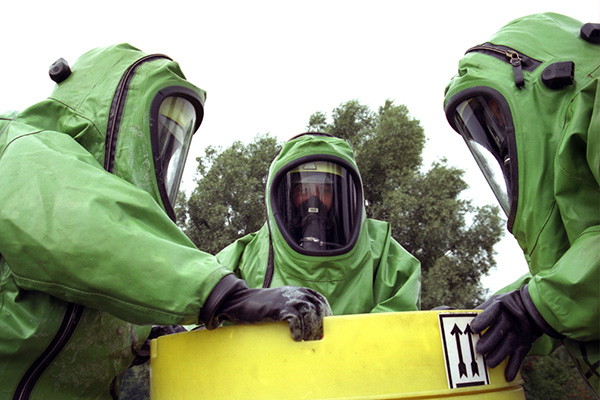Recent EPA fines highlight critical gaps in chemical safety management and the high stakes of RMP compliance failures.
By James Junkin, Strategic Advisory Board Chair at Veriforce
On April 22, 2025, the U.S. Environmental Protection Agency (EPA) announced settlements with ten California facilities for violations of chemical safety regulations, resulting in penalties exceeding $170,000. While this might seem like just another regulatory news item, these enforcement actions reveal critical insights about the state of chemical safety management across industries—and the potentially devastating consequences of compliance failures.

Among the companies penalized, OrganicGirl, LLC faced the most significant fine: $151,979. Their case highlights three critical compliance failures that are unfortunately common across many organizations handling hazardous chemicals.
First, the facility failed to promptly address safety recommendations, significantly increasing the risk of potential chemical accidents. Second, issues with operation and maintenance programs were revealed, including corrosion in refrigeration systems and insufficient emergency ventilation. Third, and perhaps most concerning, the EPA identified insufficient documentation regarding the design and operation of systems intended to prevent anhydrous ammonia releases.
On the surface, these violations might seem administrative, but they reveal deeper systemic issues. When companies delay implementing safety recommendations, it often indicates a reactive rather than proactive approach to safety management. Similarly, inadequate maintenance programs suggest potential resource constraints or misaligned priorities between operations and safety teams.
The EPA’s focus on proper documentation deserves special attention. Many organizations view documentation as a cumbersome bureaucratic requirement rather than a critical safety component. This perspective couldn’t be further from the truth.
Comprehensive documentation serves multiple essential functions: it ensures operational consistency, facilitates effective emergency response, enables meaningful safety audits, and provides crucial information during personnel transitions. Even a single oversight could jeopardize a facility’s ability to prevent or respond effectively to a chemical release.
In the case of anhydrous ammonia—a substance that can cause severe respiratory damage and skin burns—detailed documentation about containment systems, emergency procedures, and maintenance protocols isn’t just good practice; it’s a matter of life and death.
These enforcement actions highlight the critical importance of the Risk Management Program (RMP) established under Section 112(r) of the Clean Air Act. The RMP requires facilities handling hazardous chemicals to develop and implement comprehensive risk management plans, including hazard assessments, prevention programs, and emergency response strategies.
The stakes couldn’t be higher. Accidental chemical releases from RMP-regulated facilities impose a staggering cost of over $540 million annually on society. More importantly, approximately 131 million Americans live within the vulnerability zone of at least one RMP facility, meaning their health and safety depend directly on proper chemical management practices.
The EPA’s 2024 Safer Communities by Chemical Accident Prevention rule further strengthens these requirements, introducing stricter safety standards and greater transparency. This regulatory evolution reflects a growing recognition that chemical safety isn’t just an industrial concern—it’s a public health imperative.
While regulatory compliance is essential, truly effective chemical safety management requires going beyond minimum requirements. Organizations must foster an integrated approach that breaks down silos between maintenance, compliance, operations, and engineering teams.
This integration begins with comprehensive employee training that goes beyond procedural knowledge to include the “why” behind safety protocols. Employees who understand the potential consequences of non-compliance are more likely to prioritize safety in their daily operations.
Regular audits and reviews of safety systems, equipment, and documentation should be conducted not just to check regulatory boxes but to identify improvement opportunities. Any safety recommendations that emerge from these reviews should be addressed promptly and thoroughly.
Proactive engagement with regulators also plays a crucial role. Rather than viewing regulatory agencies as adversaries, forward-thinking organizations maintain open communication channels to ensure alignment and appropriate resource allocation.
The financial penalties imposed in these recent enforcement actions, while significant, represent only a fraction of the true cost of non-compliance. Beyond direct fines, organizations face potential litigation, increased insurance premiums, operational disruptions, and reputational damage.
More importantly, failures in chemical safety management can result in irreversible harm to human health and the environment. No financial calculation can adequately capture the value of preventing these outcomes.
As we reflect on these recent enforcement actions, let’s recognize them not just as regulatory consequences but as opportunities to strengthen our approach to chemical safety. By embracing a culture of continuous improvement, integrating safety considerations across all operational aspects, and viewing compliance as a floor rather than a ceiling, we can protect our workers, communities, and environment from preventable harm.
The path forward requires collective responsibility and unwavering commitment. The question isn’t whether we can afford to prioritize chemical safety—it’s whether we can afford not to.

About the Author:
James A. Junkin, MS, CSP, MSP, SMS, ASP, CSHO is the chair of the Veriforce Strategic Advisory Board, chief executive officer of Mariner-Gulf Consulting & Services, LLC and the past chair of Professional Safety journal’s editorial review board. James is a member of the Advisory Board for the National Association of Safety Professionals (NASP). He is a much sought after master trainer, keynote speaker, professor in the College of Safety and Emergency Services at Columbia Southern University, podcaster of The Risk Matrix, and author of numerous articles concerning occupational safety and health.
Read more from the author:
13 Things I Wish I Knew About Safety Before I Became a Safety Professional | Veriforce
The Missing Link: Why Integration Between Procurement, Safety & Compliance Matters | Facilities Management UK (FMUK)
In this episode, I sat down with Beejan Giga, Director | Partner and Caleb Emerson, Senior Results Manager at Carpedia International. We discussed the insights behind their recent Industry Today article, “Thinking Three Moves Ahead” and together we explored how manufacturers can plan more strategically, align with their suppliers, and build the operational discipline needed to support intentional, sustainable growth. It was a conversation packed with practical perspectives on navigating a fast-changing industry landscape.